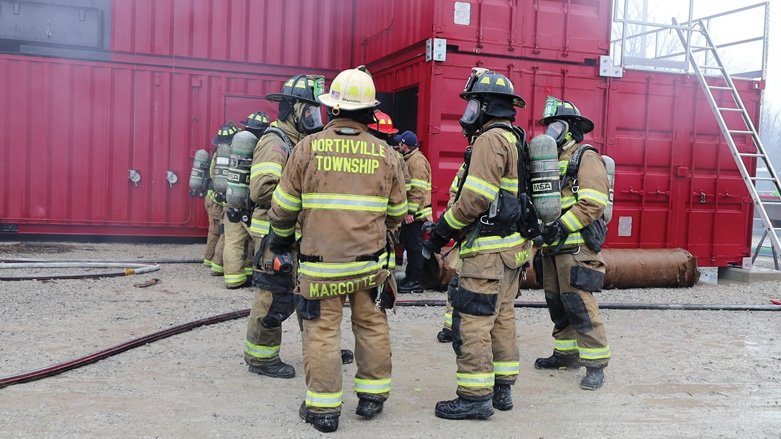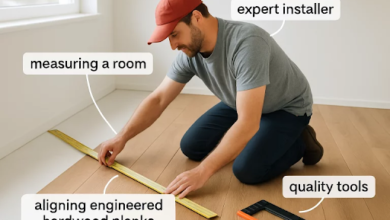
Table of Contents
- Why Hands-On Training Matters in Emergency Services
- Blending Theory and Practice for Lifesaving Skills
- Core Drills That Build Confidence on the Job
- Developing Critical-Thinking During Chaos
- Data Supports Hands-On Approaches in Training
- Adapting to Evolving Emergency Situations
- Challenges and Innovations in Training Programs
- Making a Lasting Impact Through Practical Learning
Why Hands-On Training Matters in Emergency Services
The world of emergency response is unpredictable, demanding fast thinking and flawless execution when lives are on the line. Firefighters and EMTs don’t have the luxury of second-guessing themselves in an emergency. This is why hands-on training is not just unnecessary, it’s an absolute necessity. Unlike simple classroom lectures, in-person practice gives recruits a safe environment to make mistakes, learn from them, and build the muscle memory required for the real world. With various resources, such as online EMT courses, trainees can still develop foundational knowledge. However, translating that information into practical action happens when pulling hoses, performing CPR, or navigating smoke-filled rooms.
The indisputable value of practical experience is echoed throughout the emergency services field. Training scenarios constructed to mirror real-life emergencies introduce chaos and challenge, but also foster growth and discipline. According to research on firefighter training fires, live-burn exercises create both the physical sensations and the high-stress mental environment that emergency responders must master. Combining theory with hands-on exposure reinforces protocols and allows each participant to understand the serious nature of their role, helping to reduce error in situations where every action counts.
Blending Theory and Practice for Lifesaving Skills
A robust emergency services curriculum will always include a balance between classroom theory and hands-on practice. Classroom learning gives future firefighters and EMTs a critical foundation, such as anatomy, hazardous materials recognition, and fire science. These lessons supply the “why” behind protocols, building a solid mental framework. However, transferring that knowledge from paper to reality requires participants to act out scenarios and perform procedures in simulated crisis environments. For instance, understanding blood loss on a chart is essential, but managing severe bleeding in a mock accident, with all the noise and urgency, cements the lesson far more powerfully.
Modern training programs are shaped by the realization that people learn differently—some absorb material visually, others aurally, while many thrive when physically engaged. A blend of online EMT courses to address the theory and practical labs, where students intubate training mannequins or work through scene assessments, creates a well-rounded responder. Lifelong instructors often share that recruits remember high-energy, hands-on drills from their first week, long after leaving behind their textbooks.
Core Drills That Build Confidence on the Job
- Hose Handling: Firefighters must learn to deploy hoses quickly, navigate cumbersome gear, and coordinate water flow. Repeatedly practicing in controlled settings ensures these actions become nearly automatic.
- Medical Simulations: EMTs and paramedics manage respiratory distress, cardiac arrest, and trauma at a moment’s notice. Working with lifelike dummies and actors helps trainees learn to stay calm, use their tools, and deliver care under stress.
- Team Coordination: Nearly every emergency scene requires teamwork. Drills involving search and rescue, patient movement, and coordinated attack strategies teach recruits to communicate and trust one another.
These core drills gradually fortify the transition from anxiety to confidence. Recruits learn the rhythm of their roles through repetition, building confidence alongside their skill set. Emotional readiness grows as individuals watch themselves and teammates improve, realize the value of practice, and internalize critical information that will guide their actions amid chaos. Scientific research highlights that “doing” is often the quickest way to learn in stressful professions like fire and emergency medical services, with kinesthetic learning promoting deeper retention and faster response times.
Developing Critical-Thinking During Chaos
Hands-on training isn’t just about acquiring muscle memory and developing sharp minds and decision-making skills. High-fidelity scenarios expose trainees to the intensity and unpredictability of actual emergencies. Sirens, bystanders, noise, and staged injuries are all used to prompt quick thinking and safe, effective choices. These scenarios teach that even the best-laid plans may change instantly, fostering an adaptable, resilient, and resourceful mindset.
Updates to national EMS standards reinforce the importance of scenario-based learning, which now prioritizes realistic, multi-layered exercises. Trainees must triage, treat, and stabilize patients while responding to variables that can’t be found in a textbook. Veteran paramedics and firefighters agree: no two calls are ever the same, but comfort with uncertainty is gained when recruits repeatedly work through demanding mock incidents.
Data Supports Hands-On Approaches in Training
Research continues to support the measurable benefits of hands-on training within emergency services. Data from a 2022 national analysis revealed that responders who participated in regular, simulated emergencies completed life-saving treatments 30% faster under actual duress than their peers who focused mainly on theory-based learning. The numbers are compelling: faster interventions, fewer serious on-the-job injuries, and greater team performance.
Anecdotal evidence matches these studies. Instructors nationwide report that their graduates handle the nerve-wracking first days of real service with a level head and capable hands, directly crediting time spent in practical drills. For example, one fire academy’s alumni performed admirably during their first structure fire incident, citing frequent live-burn exercises as the reason their teamwork felt second nature and their safety protocols kicked in automatically.
Adapting to Evolving Emergency Situations
Fire and EMS environments never stay the same. New threats—whether due to technology, extreme weather, or unique hazards—require constantly evolving training. Today’s trainees might be introduced to drone surveillance, hazardous material suits, or new patient-monitoring devices as part of their practical coursework. Updating hands-on scenarios with current challenges keeps responders agile and comfortable with emerging tools and environments.
Adapting isn’t just technological, though. An effective hands-on program weaves unpredictability into drills, such as shifting smoke patterns, communication blackouts, or unplanned patient deterioration. These elements help recruits hone the ability to pivot, improvise, and succeed even if protocol must be altered on the fly—essential skills when the unexpected becomes reality.
Challenges and Innovations in Training Programs
While practical training is vital, it also presents unique hurdles for agencies, academies, and educational centers. Financial restrictions, equipment needs, and scheduling can limit access to live-fire exercises and advanced simulations. To offset these challenges, many departments form relationships with community partners, local hospitals, or specialized training facilities, pooling resources to increase access to high-quality practice environments.
Innovations like simulation labs and virtual reality drills have turned the tide for many programs. While these tools don’t replace the value of live-action experience, they do supplement hands-on sessions and can even allow rare or dangerous procedures to be practiced safely. Creative problem-solving ensures that, despite budget and space limitations, as many recruits as possible gain the hands-on exposure necessary to serve their communities well.
Making a Lasting Impact Through Practical Learning
The influence of hands-on training endures long after the last simulation ends. It empowers new firefighters and EMTs to act confidently, respond quickly, and uphold public trust. This impact ripples throughout their careers, with practical learning instilling not just skills but the calm determination required during real emergencies. Experienced instructors consistently point to live drills and realistic scenario work as having the most potent effect on a responder’s readiness, character, and contribution to community safety.
As the field grows and evolves with new classrooms, technologies, and resources, this simple truth remains: meaningful, hands-on training is the heart of emergency services education. Those who prioritize practice will be best prepared to make a difference when it matters most—serving others with skill, compassion, and composure under fire.




